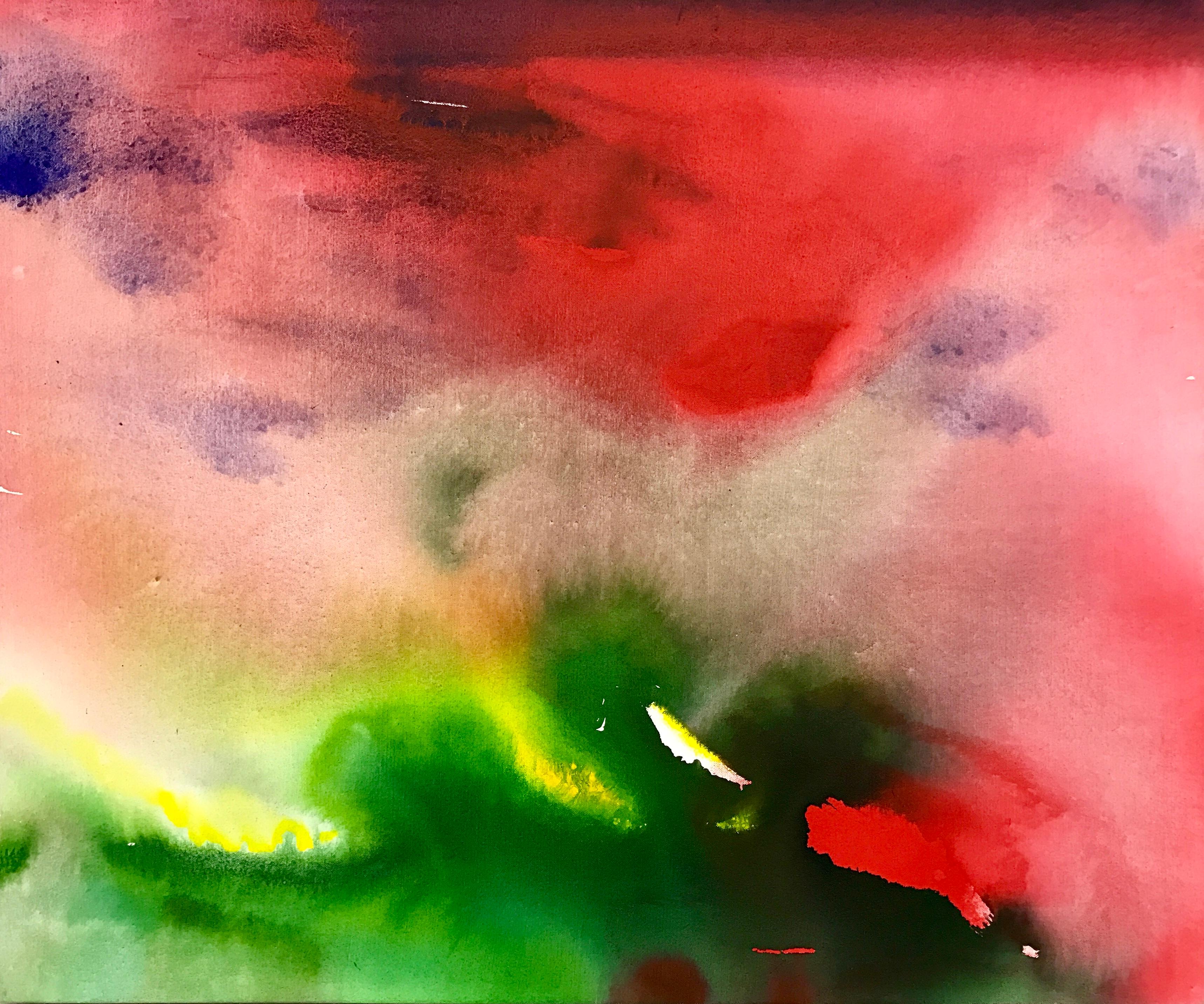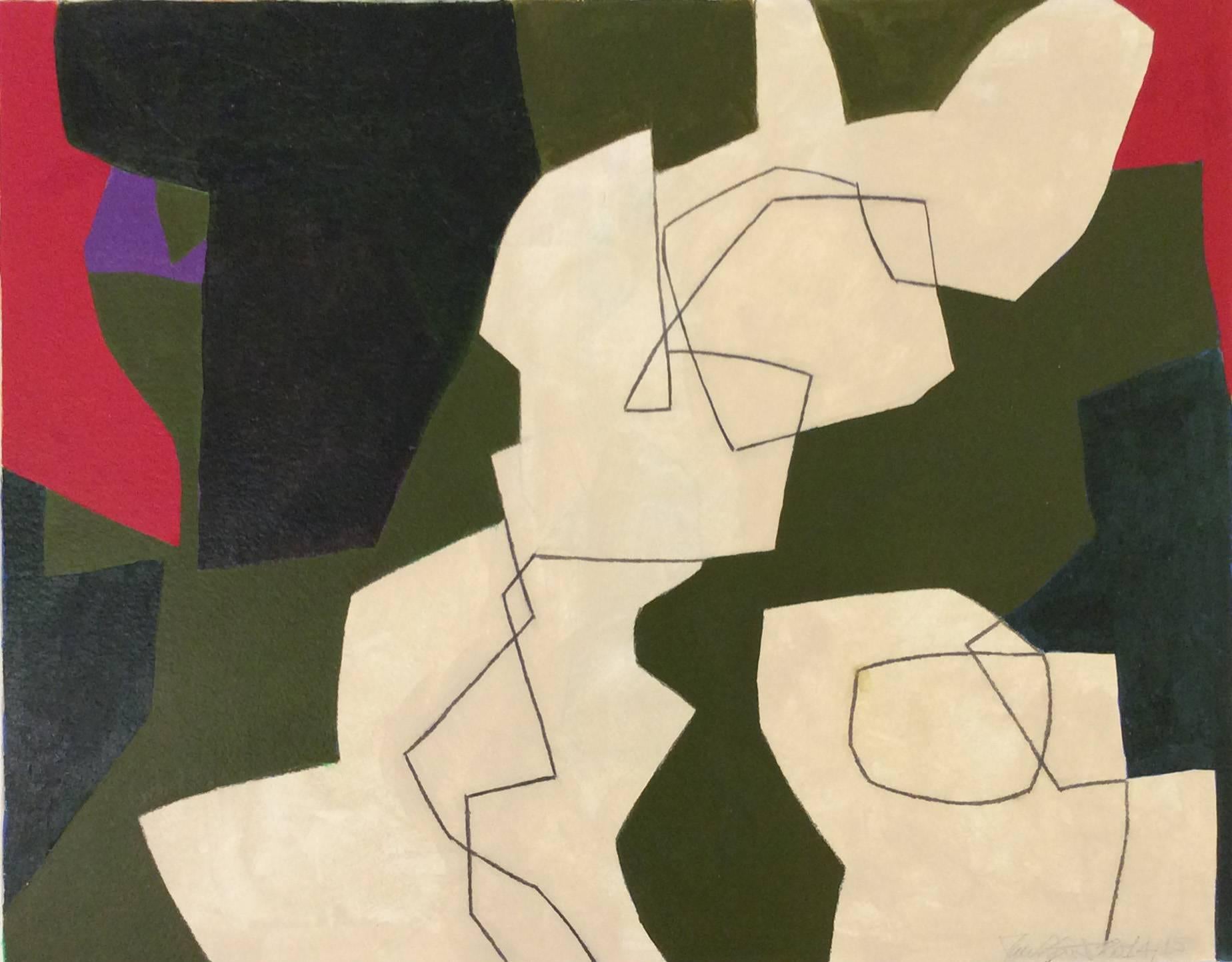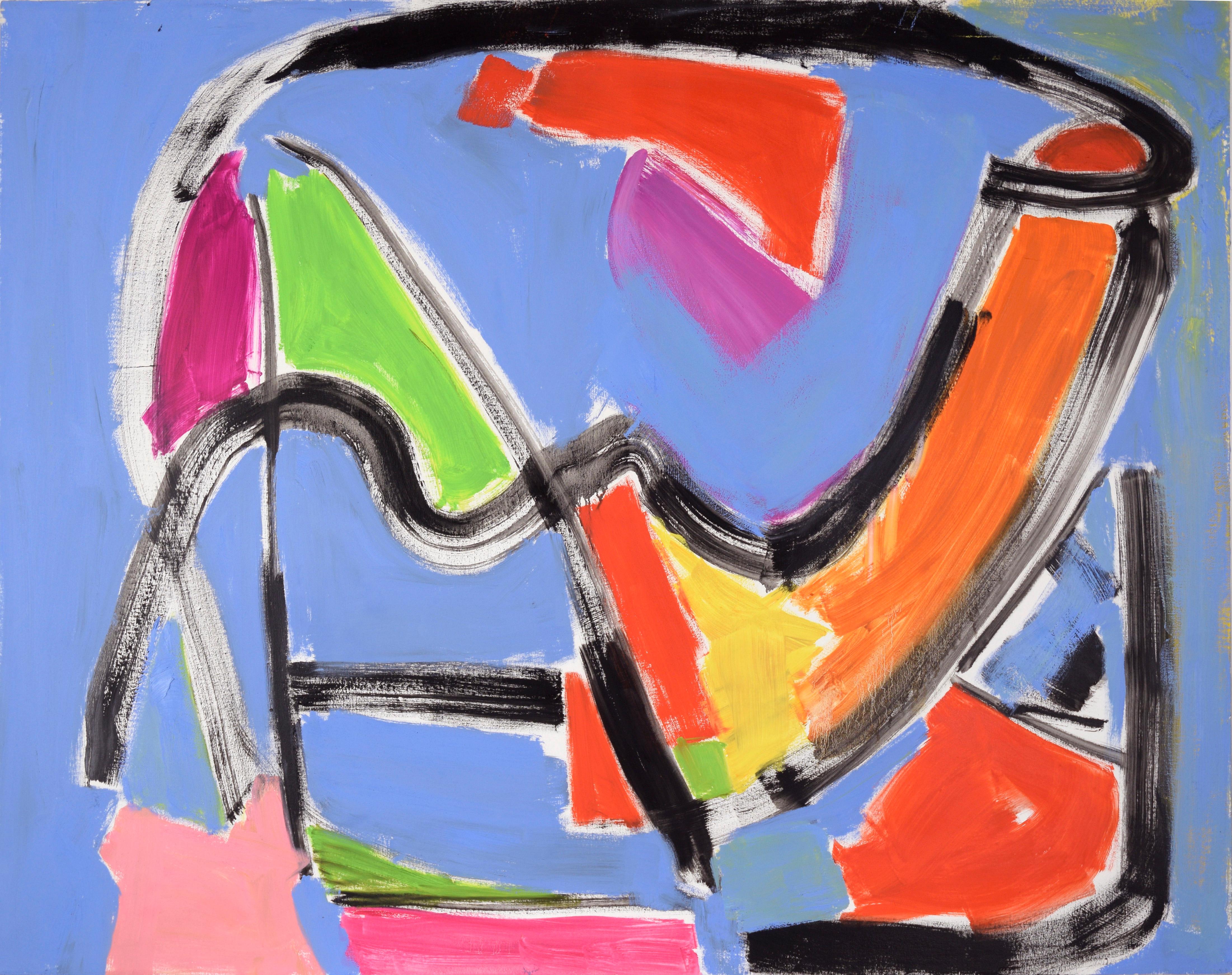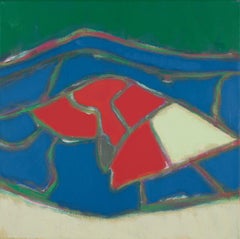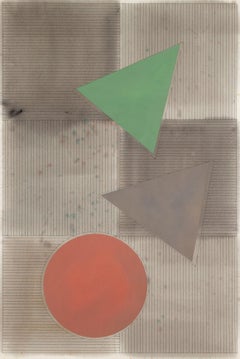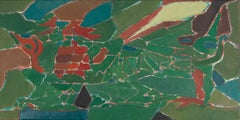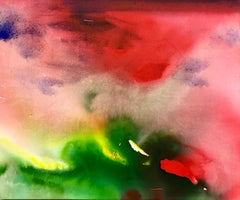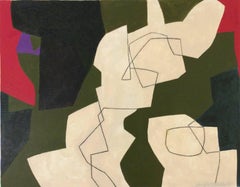Items Similar to 1960s Large Landscape Painting, Red and Green Abstract Canvas, Bright and Bold
Want more images or videos?
Request additional images or videos from the seller
1 of 5
Edward Heath1960s Large Landscape Painting, Red and Green Abstract Canvas, Bright and Bold1960 circa
1960 circa
$4,810.58
£3,500
€4,094.80
CA$6,629.21
A$7,295.38
CHF 3,825.61
MX$88,536.23
NOK 47,819.52
SEK 45,271.84
DKK 30,569.76
About the Item
Abstracted Landscape
- Creator:Edward Heath (British)
- Creation Year:1960 circa
- Dimensions:Height: 40 in (101.6 cm)Width: 50 in (127 cm)
- Medium:
- Movement & Style:
- Period:
- Condition:
- Gallery Location:Kingsclere, GB
- Reference Number:1stDibs: LU2718215092852
About the Seller
No Reviews Yet
Vetted Professional Seller
Every seller passes strict standards for authenticity and reliability
Established in 2010
1stDibs seller since 2024
41 sales on 1stDibs
Typical response time: 8 hours
- ShippingRetrieving quote...Shipping from: Kingsclere, United Kingdom
- Return Policy
Authenticity Guarantee
In the unlikely event there’s an issue with an item’s authenticity, contact us within 1 year for a full refund. DetailsMoney-Back Guarantee
If your item is not as described, is damaged in transit, or does not arrive, contact us within 7 days for a full refund. Details24-Hour Cancellation
You have a 24-hour grace period in which to reconsider your purchase, with no questions asked.Vetted Professional Sellers
Our world-class sellers must adhere to strict standards for service and quality, maintaining the integrity of our listings.Price-Match Guarantee
If you find that a seller listed the same item for a lower price elsewhere, we’ll match it.Trusted Global Delivery
Our best-in-class carrier network provides specialized shipping options worldwide, including custom delivery.More From This Seller
View AllRed Forms with Small Green Segment - Bold 1960s Abstract Oil Painting, Sixties
By Gordon House
Located in Kingsclere, GB
Gordon House was born in 1932 in Pontardawe, South Wales. Early exposure to art on trips to the Glynn Vivian Art Gallery as a young boy inspired House towards creative endeavors and at the age of fourteen he was awarded a grant to enter art school which he accepted. From 1947 to 1950 he studied at Luton School of Art, Bedfordshire, and St. Albans School of Art, Hertfordshire. House's contemporaries included Richard Smith and John Plumb with whom he remained close. During the early fifties, after finishing art school, House began work as assistant to the ecclesiastical sculptor Theodore Kern. He also spent time at an advertising studio where he honed his burgeoning skills in typography and graphic design. In 1952 House was offered the position of designer for Imperial Chemical Industries Plastics Division where he stayed until 1959. This was followed by two years spent as graphic designer for the Kynoch Press in London. In 1961 House set out on his own as a self-employed designer and typographer. Initially this was supplemented by part-time teaching at art schools in and around London but by 1964 House was able to devote himself entirely to his design work which freed up valuable time to concentrate on his own artistic output in the studio.
In the late fifties, informed by the new art emerging from America and that of his contemporaries in England, House began to create large-scale abstract works which he was invited to show in 1959 at Dennis Bowen's legendary New Vision Centre in Marble Arch.
House was an active participant in the vibrant London art scene of the sixties, regularly attending lectures, exhibitions and discussions. In 1960 he exhibited in 'Situation' the key abstract exhibition of the decade held at the RBA Galleries. Other participating artists included Robyn Denny, Bernard and Harold Cohen, Gillian Ayres, John Hoyland, Richard Smith and William Turnbull among others. These artists, united by a common admiration for American Abstract Expressionism, were frustrated by the lack of exposure given to large-scale abstract works in commercial galleries so they organised their own exhibition. The name was derived from the participants' idea that an abstract painting that occupied the whole field of vision would involve the spectator in an 'event' or 'situation'. This exhibition was followed by 'New London Situation' in 1961 and a nationwide touring Arts Council presentation in recognition of the significance of the two earlier shows.
In 1961 House began producing his first prints at the Kelpra Studio, run by Chris and Rose Prater, where he made the earliest fine art screenprint ever to be produced in Britain. Artists such as Paolozzi and Hamilton followed in his footsteps and together they started a printmaking revolution in Britain. They cemented the medium of the screenprint in the world of fine art as opposed to the commercial sphere and secured the reputation of Kelpra in the process. Later, together with Cliff White, House set up the White Ink (Ltd.) print studio in London, where he produced etchings and wood engravings on a series of magnificent antique printing presses...
Category
20th Century Abstract Paintings
Materials
Oil, Board
Highway - Bold Abstract Painting with Red, Blue and Green
By Gordon House
Located in Kingsclere, GB
Gordon House was born in 1932 in Pontardawe, South Wales. Early exposure to art on trips to the Glynn Vivian Art Gallery as a young boy inspired House towards creative endeavors and ...
Category
1990s Paintings
Materials
Canvas, Oil
Red/Green, from Study for Larger Tri Motif Series, 1977 - Gouache, Watercolour
By Gordon House
Located in Kingsclere, GB
Gordon House was born in 1932 in Pontardawe, South Wales. Early exposure to art on trips to the Glynn Vivian Art Gallery as a young boy inspired House towards creative endeavors and at the age of fourteen he was awarded a grant to enter art school which he accepted. From 1947 to 1950 he studied at Luton School of Art, Bedfordshire, and St. Albans School of Art, Hertfordshire. House's contemporaries included Richard Smith and John Plumb with whom he remained close. During the early fifties, after finishing art school, House began work as assistant to the ecclesiastical sculptor Theodore Kern. He also spent time at an advertising studio where he honed his burgeoning skills in typography and graphic design. In 1952 House was offered the position of designer for Imperial Chemical Industries Plastics Division where he stayed until 1959. This was followed by two years spent as graphic designer for the Kynoch Press in London. In 1961 House set out on his own as a self-employed designer and typographer. Initially this was supplemented by part-time teaching at art schools in and around London but by 1964 House was able to devote himself entirely to his design work which freed up valuable time to concentrate on his own artistic output in the studio.
In the late fifties, informed by the new art emerging from America and that of his contemporaries in England, House began to create large-scale abstract works which he was invited to show in 1959 at Dennis Bowen's legendary New Vision Centre in Marble Arch.
House was an active participant in the vibrant London art scene of the sixties, regularly attending lectures, exhibitions and discussions. In 1960 he exhibited in 'Situation' the key abstract exhibition of the decade held at the RBA Galleries. Other participating artists included Robyn Denny, Bernard and Harold Cohen, Gillian Ayres, John Hoyland, Richard Smith and William Turnbull among others. These artists, united by a common admiration for American Abstract Expressionism, were frustrated by the lack of exposure given to large-scale abstract works in commercial galleries so they organised their own exhibition. The name was derived from the participants' idea that an abstract painting that occupied the whole field of vision would involve the spectator in an 'event' or 'situation'. This exhibition was followed by 'New London Situation' in 1961 and a nationwide touring Arts Council presentation in recognition of the significance of the two earlier shows.
In 1961 House began producing his first prints at the Kelpra Studio, run by Chris and Rose Prater, where he made the earliest fine art screenprint ever to be produced in Britain. Artists such as Paolozzi and Hamilton followed in his footsteps and together they started a printmaking revolution in Britain. They cemented the medium of the screenprint in the world of fine art as opposed to the commercial sphere and secured the reputation of Kelpra in the process. Later, together with Cliff White, House set up the White Ink (Ltd.) print studio in London, where he produced etchings and wood engravings on a series of magnificent antique printing presses...
Category
20th Century Abstract Paintings
Materials
Ink, Watercolor, Gouache
The Dragon's Wing, 1990 - Bold Green Abstract Painting with Red and Blue
By Gordon House
Located in Kingsclere, GB
Gordon House was born in 1932 in Pontardawe, South Wales. Early exposure to art on trips to the Glynn Vivian Art Gallery as a young boy inspired House towards creative endeavors and ...
Category
1990s Paintings
Materials
Canvas, Oil
Untitled - Green Abstract Painting with Red and Blue
By Gordon House
Located in Kingsclere, GB
Gordon House was born in 1932 in Pontardawe, South Wales. Early exposure to art on trips to the Glynn Vivian Art Gallery as a young boy inspired House towards creative endeavors and ...
Category
1990s Paintings
Materials
Canvas, Oil
Red/Green Ornament Frieze I - Bold Green and Red Shapes, Abstract Oil Painting
By Gordon House
Located in Kingsclere, GB
Gordon House 1932-2004
Red/Green Ornament Frieze I, 1976-1977
signed and dated on the canvas overlap
acrylic on canvas
91 x 91 cm
35 7/8 x 35 7/8 in
Gordon House was born in 1932 in Pontardawe, South Wales. Early exposure to art on trips to the Glynn Vivian Art Gallery as a young boy inspired House towards creative endeavors and at the age of fourteen he was awarded a grant to enter art school which he accepted. From 1947 to 1950 he studied at Luton School of Art, Bedfordshire, and St. Albans School of Art, Hertfordshire. House's contemporaries included Richard Smith and John Plumb with whom he remained close. During the early fifties, after finishing art school, House began work as assistant to the ecclesiastical sculptor Theodore Kern. He also spent time at an advertising studio where he honed his burgeoning skills in typography and graphic design. In 1952 House was offered the position of designer for Imperial Chemical Industries Plastics Division where he stayed until 1959. This was followed by two years spent as graphic designer for the Kynoch Press in London. In 1961 House set out on his own as a self-employed designer and typographer. Initially this was supplemented by part-time teaching at art schools in and around London but by 1964 House was able to devote himself entirely to his design work which freed up valuable time to concentrate on his own artistic output in the studio.
In the late fifties, informed by the new art emerging from America and that of his contemporaries in England, House began to create large-scale abstract works which he was invited to show in 1959 at Dennis Bowen's legendary New Vision Centre in Marble Arch.
House was an active participant in the vibrant London art scene of the sixties, regularly attending lectures, exhibitions and discussions. In 1960 he exhibited in 'Situation' the key abstract exhibition of the decade held at the RBA Galleries. Other participating artists included Robyn Denny, Bernard and Harold Cohen, Gillian Ayres, John Hoyland, Richard Smith and William Turnbull among others. These artists, united by a common admiration for American Abstract Expressionism, were frustrated by the lack of exposure given to large-scale abstract works in commercial galleries so they organised their own exhibition. The name was derived from the participants' idea that an abstract painting that occupied the whole field of vision would involve the spectator in an 'event' or 'situation'. This exhibition was followed by 'New London Situation' in 1961 and a nationwide touring Arts Council presentation in recognition of the significance of the two earlier shows.
In 1961 House began producing his first prints at the Kelpra Studio, run by Chris and Rose Prater, where he made the earliest fine art screenprint ever to be produced in Britain. Artists such as Paolozzi and Hamilton followed in his footsteps and together they started a printmaking revolution in Britain. They cemented the medium of the screenprint in the world of fine art as opposed to the commercial sphere and secured the reputation of Kelpra in the process. Later, together with Cliff White, House set up the White Ink (Ltd.) print studio in London, where he produced etchings and wood engravings on a series of magnificent antique printing...
Category
1970s Paintings
Materials
Canvas, Acrylic
You May Also Like
Red and Green Modern Abstract Landscape Painting on Canvas by British Artist
By Margaret Francis
Located in Preston, GB
Red and Green Modern Abstract Landscape Painting on Canvas from leading British Artist Margaret Francis, widow of Sam Francis.
Margaret Francis received her Degree in Fine Art from Winchester Art...
Category
Early 2000s Abstract Abstract Paintings
Materials
Acrylic, Watercolor, Canvas, Cotton Canvas
Abstract Red & Green (Contemporary Minimal Abstract Painting on Paper)
By Ralph Stout
Located in Hudson, NY
Abstract painting on paper
image: 18 x 24 inches
paper size: 22 x 30 inches
Contemporary minimalist abstract painting on a beautiful thick, creamy white Arches paper, unframed.
Ins...
Category
2010s Abstract Abstract Paintings
Materials
Acrylic, Archival Paper
$1,200 Sale Price
45% Off
Abstract Landscape Red Green - Scottish Abstract Expressionist art oil painting
By William Gear
Located in Hagley, England
This stunning Scottish Abstract Expressionist oil painting is by noted Scottish artist William Gear. Painted in 1949 it is an early and significant painting which dates to the early part of his career. Entitled Abstract Landscape with Red and Green it was painted during Gear's time in Paris and involvement with COBRA. Mostly red and green shapes are incased in black on a vivid yellow background. A really pleasing composition to the eye and perfectly housed in an ebonised frame, it is an excellent example of Gear's work.
Signed and Dated '49 lower right. Inscribed, titled and dated verso.
Provenance: Cornish collection.
Condition. Acrylic on canvas 25 inches by 20 inches and in good condition.
Frame. Housed in an ebonised frame, 30 inches by 25 inches and in good condition.
Few British painters have played an active role in the modern abstract movement of post-war Europe. William Gear was the most passionate and committed exception. He continued the tradition of the Edinburgh-Paris axis established by J.D. Fergusson, Samuel Peploe and others, spending vital years between 1947 and 1950 living and working in Paris. Significantly, in recent years, he received the greatest acclaim in France, Germany and the Netherlands.
He was born in 1915 in Methil, Fife, into a mining family; the particular landscape of "pitheads, the sea, rocks, castles, trees, storms and poverty" marked his earliest identity with a place and probably remained the most influential to his art. Years later he recalled as a schoolboy visiting the local art gallery in Kirkcaldy and seeing 12 colourful still-lifes by Peploe. Art-history lessons during student years at Edinburgh College of Art, in particular Byzantine classes under David Talbot Rice, also influenced his concern for structure. This had as much to do with the formal language of painting as sheer delight in the medium itself. Gear never missed an opportunity to show people the merits of a well-constructed painting.
On a travelling scholarship in 1937, he chose to study with Fernand Leger, described by Gear as "a keystone for me, seldom abstract, rather a degree of abstraction". The Second World War interrupted these formative years and, by 1940, Gear had joined the Royal Corps of Signals. Dispatched to the Middle East, he still had the discipline to paint - mostly works on paper of damaged landscapes - with exhibitions in Jerusalem, Tel Aviv, Cairo as well as Siena and Florence.
His naturally robust and tenacious temperament was profoundly affected by visiting Bergen-Belsen, and this certainly influenced the later experiments with the black armature. As the British officer in Celle, working for the Monuments, Fine Arts and Archives Section of the Control Commission, he focused on securing the safety of the Berlin Art Collection in Schloss Celle, and organised an important series of modern art exhibitions, including the rejected work of Karl Otto Gotz...
Category
1940s Abstract Expressionist Abstract Paintings
Materials
Oil
$26,389 Sale Price
20% Off
Red Abstract - British 1960 abstract art oil painting
By Peter L. Field
Located in Hagley, England
This vibrant British abstract is by noted artist Peter L Field. Painted circa 1960, the composition in reds has relief sculptural impasto. The red works ...
Category
1960s Abstract Abstract Paintings
Materials
Oil
$3,958 Sale Price
20% Off
Bold Gestural Abstract Composition with Vibrant Greens and Reds
Located in Soquel, CA
Bold Gestural Abstract Composition with Vibrant Greens and Reds by Ellis Hopkins (American, b. 1952).
This large scale piece is comprised of blocks of bright colors atop a cornflow...
Category
Late 20th Century Abstract Expressionist Abstract Paintings
Materials
Canvas, Stretcher Bars, Oil
"Duo" Seymour Franks, Mid-Century, Red and Green, Abstract Composition
By Seymour Franks
Located in New York, NY
Seymour Franks
Duo, 1947
Signed and dated lower right
Oil on canvas
44 x 37 inches
Seymour Franks, 1916-1981, originated from New York City, where he was born in 1916. At just 16 y...
Category
1940s Surrealist Abstract Paintings
Materials
Canvas, Oil
More Ways To Browse
1960s Painting Canvas
Vintage Heath
Large Paintings And Landscapes
1960s Landscape Oil Painting
Laura Placa
Lee Parks
Mary Nohl
Mcclain Gallery
Meyer Von
Michael Cole
Moises Villafuerte
Northern Lights Painting
Painting Green Coral
Paintings By Croatian Artists
Paul Jenkins Acrylic
Rico White
Russian Helmet
Sadamasa Motonaga
